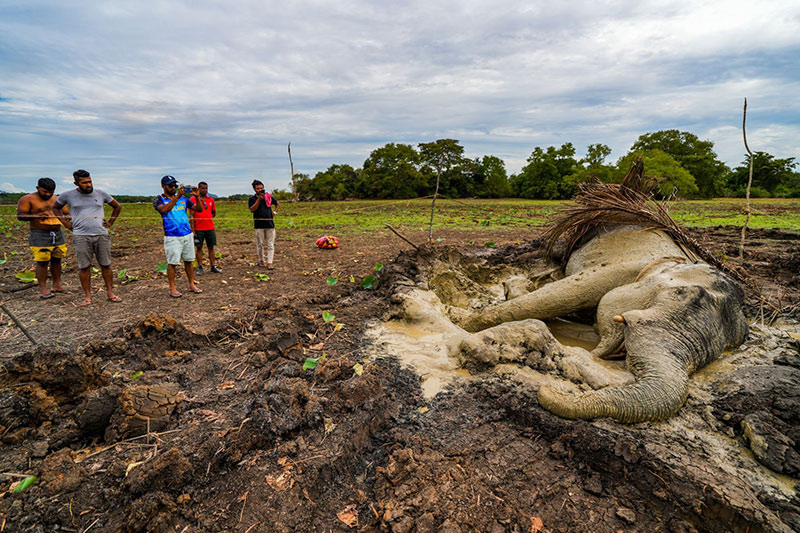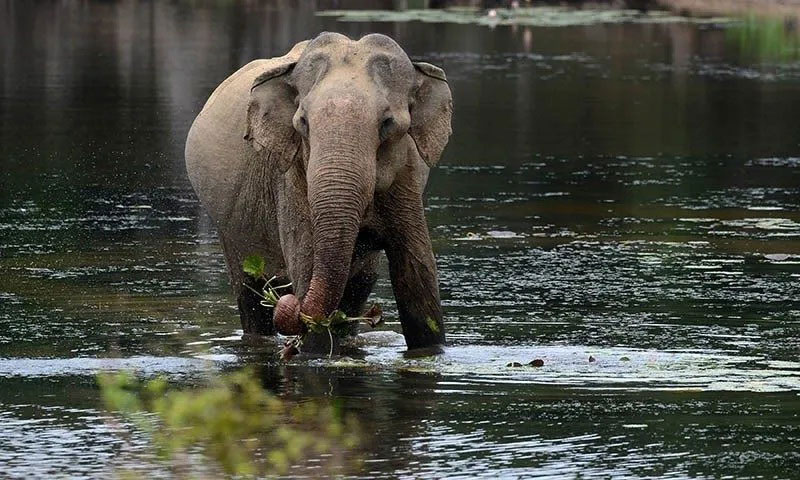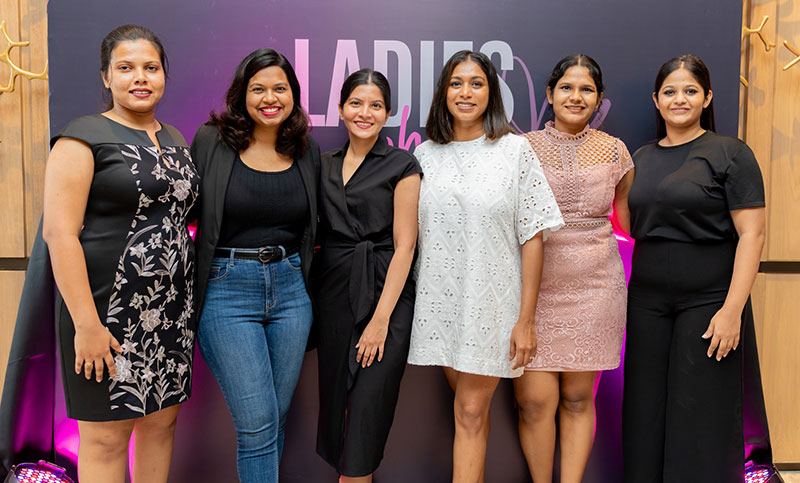Life style
Sticking to convictions and following a dream

The face of fashion is changing. Consumers today want to buy from local designers. They want to find unique pieces over mass-produced department store goods, express their values through their clothing, and support eco-friendly and sustainable businesses. So with this much more diverse and engaged pool of eager shoppers, fashion designers are popping up like wildflowers to meet these nuanced demands. But that doesn’t mean that it’s necessarily a piece of cake for an independent designer to successfully break into the market and get her fashion brand off the ground. Sure, the rise of social media helps get access to interested buyers, and it’s easier than ever to start up a good-looking Instagram account to present to the world and start gaining an audience for their unique style concepts. But in the words of this designer Neshara “there’s no one-size-fits-all in this business anymore.”
by Zanita Careem
She is Hasara Neshanthi, who has the passion and love towards the fashion world. She started her career as a Banker following her Professional Qualification in Human Resources Management and Masters in Business Administration (MBA).
 An highly performing banking professional, she was never satisfied with her career but always inspired to start something on her own. She loved fashion, and sewing Her mother has been a great influence on her life,and mastered almost everything from cross-stitch work, paper quilling, pot decorations, hand stitching, artificial plant making, sticker printing to screen printing on clothes and etc.). Finally in my late 20s (in 2017) I decided to follow my heart and determined to start my own fashion brand.
An highly performing banking professional, she was never satisfied with her career but always inspired to start something on her own. She loved fashion, and sewing Her mother has been a great influence on her life,and mastered almost everything from cross-stitch work, paper quilling, pot decorations, hand stitching, artificial plant making, sticker printing to screen printing on clothes and etc.). Finally in my late 20s (in 2017) I decided to follow my heart and determined to start my own fashion brand.
She started her Diploma in Fashion Technology at LIFT and completed it successfully.
But in 2018 she gave up her lucrative banking career and started perusing her own Brand named “Neshàra”. Neshàra encompasses a clothing brand which customizes women’s designer wear from Bridals, Sarees to Indian wear. As a brand Neshàra is always proud and focussed on attention to detail and hand embellishments. She believes fashion designing is also a world in itself, involving technology, creativity, media of expressing your own emotions, fashion, design and also business.
As a designer she would love to see customers delighted when they lay their eyes on the final product through her brand “Neshàra”. One of her desires is to do a fashion runway with a beautiful collection in future. “Although business has slowed down due to unexpected Covid-19 pandemic situation I am positive that everything will return back to normal so that we all can continue our beautiful lives from where it was halted.” she quipped
Your niche in the Fashion world?
“Neshàra” is a clothing brand which customizes women’s designer wear from bridals, sarees, Indian wear, evening wear to formal wear. I always want to create something unique yet simple. So, my niche market would be clients with unorthodox fashion desires
What inspired you to drop a top banking career and into fashion?
Even though, I was an oustanding banking officer but I was never satisfied. I was always inspired to build something of my own. Since i my childhood I have seen how hard my father struggled and worked as a businessman and became successful in his dream which inspired me to start my own brand and work hard on it.
What are the difficulties you experienced when getting started?
I believe, starting your own business is a bit of a challenging task. What I realized people are hesitant to count on new designers unless you have good connections of networking. In the beginning, I faced many difficulties or customize but never gave up I started an online store since I did not have the capital to invest ion a large scale Most importantly I also wanted to experience how the business would grow and l I chose Instagram and Facebook as my online promoting platforms. And I was struggling to gain customers . But I think you learn from mistakes you do. I took them as lessons and learnt from them so that I may be my own master soon.Also what I strongly believed is that you should never get disappointed or discouraged by my failures. Nothing is easy in this world and only thing you should do is never give-up on your dreams and keep working hard to achieve those.
Your Challenges at the moment
Due to Covid-19 pandemic lot of businesses are facing downfall and mine too is not an exception. I started my career in Fashion designing in October 2018 and it got really boosted around February 2020 where it started to get two three orders every month and Finally I thought yes my time has come. But unfortunately we have to face a lockdown and business dropped . That time it was difficult . to find some fabrics, machines, dye products and etc due to government ban on imports and we have to find alternatives and move on with the business with all the prevailing safety measurements.
Your latest collection?
Actually speaking I’m working on a wedding dress collection these days.
What is different and special about your Brand?
I always focus on unique, simple and on quality but yet fashionable designs. As a brand “Neshàra” is always proud and focused on attention to detail and hand embellishments.
A
Banking and Fashion are two different poles. How did you fit into designing so well?
As I told earlier, with the influence of my mother I believe I had the ability and talent for art since my childhood where I always tried to do a lot of creative work and I still have a collection of various artworks from stitching to painting to other craft work which I have done since my childhood. Fashion is also a mode of art so all came naturally with the love and passion I have for the creativity.
What are your future aim?
One of my desires is to do a fashion runway with a beautiful collection in future and starting a boutique is my goals Also I want to start catering to foreign markets in future. I know it is a big dream, but nothing is lost if you try hard
Will your Brand move out of Colombo ?
Yes I do cater out of Colombo as well. Even though it is hard to get measurements personally, I get measurements online or else design according to standard UK measurements with basic customer requirements
Is there anyone who is special on your journey into designing?
 My parents, brother and my husband have been my strength from the beginning. My father and brother has been my criticizers to encourage me to do better and my mother and husband have been my appreciators who always appreciate my work and motivate me.
My parents, brother and my husband have been my strength from the beginning. My father and brother has been my criticizers to encourage me to do better and my mother and husband have been my appreciators who always appreciate my work and motivate me.
Also I’m forever thankful to Mrs. Roshani Leanage (chairperson at LIFT) and Ms. Niroshani Leanage (Managing Director at LIFT) for lifting me up and making me believe in my true potential with their kind words. I still remember what I was told on my final presentation in my Fashion Diploma at LIFT. They appreciated my work and told that they believe that I would go a long way if I start something on my own which also motivated and encouraged me to start my own brand.
Well, also I gratefully remind Natasha, who always pushed me, encouraged me and believed in me to take this decision in quitting the job and starting my own brand, Thushini, one of my best friends who gave me freedom to design her home coming lehenga without a second thought even before I start my brand even though she has not seen any of my work. And, of course my first official customer Imali and all the others who supported me in my endeavor.
Life style
Human – Elephant Conflict Is Rising in Sri Lanka
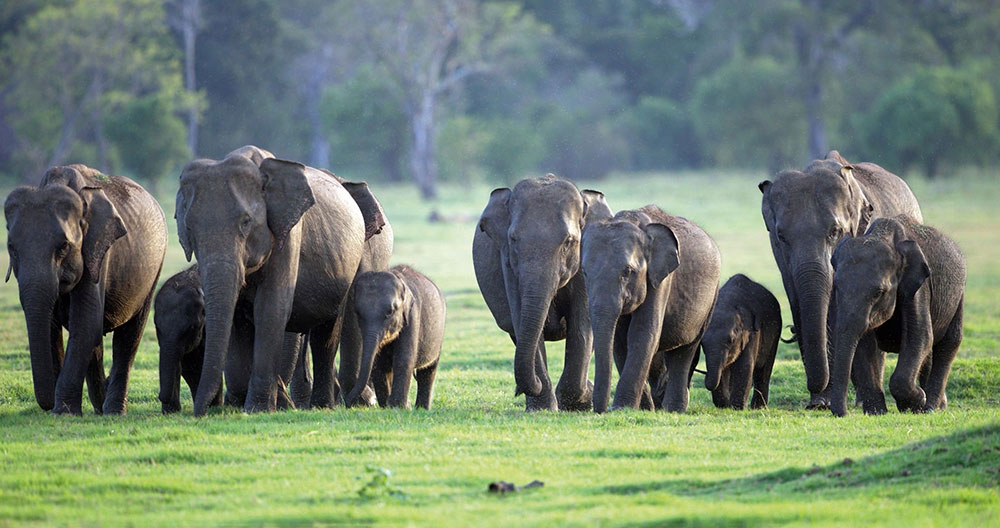
Driven from their original habitats, the animals are raiding crops and being killed by frightened farmers, but conservationists are piloting better ways to coexist
In Makulpotha village, 89 miles northwest of Colombo, Punchibanda woke up to the trumpet of an elephant while he was sleeping in a small wooden hut built on a tree beside his vegetable farm. Fearing that the elephant could destroy his harvest of pumpkins, melons and eggplants, Punchibanda rushed to chase it away. But he could not guard his produce, and instead lost his life.
The large bull elephant charged toward the 62-year-old, who fainted out of fear; the animal crushed him to death. Over a year later, villagers still live in fear as they struggle to protect their crops from wild elephants.
Historically, elephants and humans lived in harmony in Sri Lanka. When the farmers were done harvesting their fields, they would allow elephants to feed on the stubble. But deforestation, haphazard cultivation methods and massive development projects have led to increasing human-elephant conflict in the country. Sri Lanka has the highest number of elephant deaths caused by conflict with humans, and second-highest number of human deaths caused by elephants. In 2022 and 2023, over 800 elephants in Sri Lanka died.
In a bid to balance population density across the country, people have been relocated to areas with a high density of elephants. The animals are forced to live in protected wildlife parks that have limited resources. They venture into nearby villages looking for food and water, which leads to the destruction of crops, causing the farmers to employ violent methods to get rid of them.
In other instances, elephants would get aggressive and attack farmers. If you pluck someone who lives in a town and tell them to live in a village, they would not know how to coexist with the wildlife; they would carry the fear and treat them with aggression, said Zaineb Akbarally, vice president of the Wildlife and Nature Protection Society.
Sri Lanka is home to a subspecies of endangered Asian elephants and had a population of over 5,000 elephants in 2011, according to a government survey. But Akbarally doesn’t think that s an accurate number since it is difficult to count elephants in the wild, and numbers appear to have been in decline. “We’ve pretty much lost all the elephants in the central highlands,” she said, adding that only one herd remained in the Peak Wilderness nature reserve and two elephants in Sinhraja, the country s last primary rain forest, that had previously belonged to bigger herds.
Elephants have been sacred to both Hindus and Buddhists in Sri Lanka and were considered a symbol of pride to ancient rulers, who employed them in battles. To this day, domesticated elephants play a key role in Esala Perahera, an annual Buddhist cultural and religious procession, where they carry a replica of Buddha s tooth relic (the holiest religious relic for Sri Lankan Buddhists) in a casket, caprisoned in extravagant sequin-embroidered outfits accompanied by fire performers, drummers and dancers in Kandy. However, wildlife activists allege that elephants are tortured by mahouts to perform during the procession.
Elephant populations in Sri Lanka started to fall during colonial rule as the Portuguese, Dutch and then the British captured them for export. Historical records also suggest that the British killed over 5,000 elephants in 15 years as they hunted them for sport. But after independence in 1948, as infrastructure projects started getting built in the country to provide land to the landless and reduce population density, forest cover was cleared and new farmlands were created next to the elephant habitats, which laid the ground for the current conflict.
In response, local authorities started fencing elephants inside protected wildlife parks. But two-thirds of the home ranges of wild elephants, which included their feeding, watering, mating and resting sites, lay outside these parks. This also led to overcrowding, and elephants ventured into villages. Many died of starvation or became malnourished.
Currently, there are 26 national parks in Sri Lanka, and most elephants live in the large ones such as Yala, Wilpattu, Udawalawe and Minneriya. But in a 2019 survey, conservationists found out that while humans lived in 70% of these elephant ranges, only 18.4% of the elephant ranges were in those protected parks.
Meanwhile, farmers were growing crops like sugarcane, rice and vegetables that elephants loved to eat, so they would raid and destroy the crops and knock down houses in the process. Farmers, who are often impoverished and vulnerable, tended to retaliate by shooting at them or bursting firecrackers. Between January and April of 2023, 38 elephants were shot dead in Sri Lanka, according to the Department of Wildlife Conservation.
Villagers also use jaw bombs to drive elephants away. To make these, they pack gunpowder and metal scraps with fodder and hide them inside watermelons and pumpkins, which detonate when bitten. While these instantly kill smaller animals, they end up wounding large animals like elephants or shattering their jawbone so they can no longer eat or drink and suffer a slow, painful death with injuries. In 2022, as many as 55 wild elephants died due to this explosive bait.
Christy Nikson, 36, a farmer in Thikkodai village in eastern Sri Lanka, uses a small, low-voltage electric fence to guard his farm, but it offers little to no help now. Elephants are smart. When they see the fence, they cover it with dry wood, step on it, and come to our paddy fields, he said. For six to eight months every year, when water is scarce, Nikson and the villagers have to battle with elephants every single day. Elephants also know the smell of wheat flour. And they love it, Nikson said. When we have flour or roti in our kitchens, they try to enter from our backyards, try to break into our homes, and take the food using their trunks.
It is a very painful situation for low-income rural communities at the heart of this conflict, according to Akbarally. The crops are their bread and butter, it s their livelihood. Suddenly, animals come and destroy your livelihood. We haven’t given people a sense of security either, she said. If there s some sort of compensation when farmers lose their crops, it can at least mitigate the animals being shot and killed.
While the government did introduce an insurance scheme in 2013 to cover elephant damage to crops, farmers complained it was difficult to claim the funds or that the coverage was limited. Pritiviraj Fernando, chairman of the Centre for Conservation and Research, explained that it s challenging to verify crop loss caused by elephants. If a farmer is not happy with the compensation, they can even encourage elephants to come and eat the crops. So these programs are very difficult to implement, he said, adding that the situation leads to distrust between farmers and local authorities.
Sri Lanka s three decades of civil war also had an impact on conflict between humans and elephants. When the war was underway in the northern and eastern regions, it forced people to flee their homes and abandon their farmlands. With limited human activity, wild elephants started venturing into these areas again. However, as many people started resettling in their villages after the war ended in 2009, it worsened conflict with the elephants.
Meanwhile, over the last few decades the government’s response has been a repeat of the past, as they have forced more elephants into smaller pockets of forest cover creating unsustainable conditions. They do this through elephant drives, which involve hundreds of people walking through the forest and chasing elephants away by making different kinds of noises, firing thousands of firecrackers or shooting at the sky. Electric fences are also erected on the boundaries of these protected areas so that elephants cannot return.
Yet often these elephants do end up returning to the villages. For instance, when shrublands were cleared for the Mahaweli Development Project a program that began in the 1960s, covering 39% of the country s area, aiming to develop agricultural land and create hydroelectric power facilities the wildlife department conducted a large elephant drive to move 130 elephants into the Wilpattu National Park, but about 50 of them returned.
Over 100 ended up returning after 150 elephants were driven into the Maduru Oya National Park in 1988. While the authorities haven’t done any major drives since 2006, they conduct smaller ones when people complain. But these kinds of drives only increase the aggressiveness of elephants and subject them to severe stress, said Fernando.
While young calves and adult females live in herds, adult males lead a solitary life. And it s often these bull elephants that raid crops and cause human deaths, injuries and damage to property. Over the years, researchers have found that while elephant drives chase away some of the herds they do not drive away the aggressive, solitary males.
Later on, when the Sri Lankan government realized they could not fence wild elephants, they started building holding grounds to retain and rehabilitate them. But conservationists believe that these grounds do not hold enough food for elephants. Audit reports have also revealed mismanagement of funds allocated for feeding elephants. Out of the 65 elephants that were housed at the first holding ground in Horowpathana National Park, 16 of them died in the first six years due to malnutrition. A few were shot dead while trying to escape the grounds. Irrespective of these concerns, the government is planning to build another holding ground in southern Sri Lanka.
“Almost half of the country is now shared by elephants and humans. So it shows that the attempt to limit elephants to protected areas has completely failed and it s not an option,” said Fernando.
Looking for ways to mitigate the conflict, Fernando and his team have been testing community fencing initiatives across villages in the country. They’ve been experimenting with different kinds of electric fences to be placed around farmland to protect human habitats, as opposed to national parks which limit elephants access to sites of food and water. These fences were removed after cultivation and animals were allowed to pass through the farmlands, which, Fernando said, reduced conflict and safeguarded crops.
But small organizations can only show the way, said Fernando. Initiatives have to be planned and implemented by the government. The government has always announced plans and appointed committees but no action has been taken on the ground. Just last year, Pavithradevi Wanniarachchi, the Minister of Wildlife and Forest Resources Conservation, said that a new policy would be formed to address the conflict, but there has been no follow-up to that statement since then.
“We need to make the right policy and governance decisions,” Akbarally said. “Instead, we are creating more conflict by setting up more and more infrastructure developments, constantly cutting down forests and putting more pressure on these animals. It s not like the elephants come out and decide one day , ‘let s go to war with humans.’”
By Zinara Rathnayake
(New Lines Magazine)
Fashion
Global advocate for humanity

Charming Anudi Gunasekara (25y) is the reigning Miss World Sri Lanka 2024/25. Hailing from Anuradhapura where she studied at Central College, Anuradhapura, she is a graduate from the University of Kelaniya with a Second Upper BA (Hons) degree in International Studies.
She also holds a Diploma in International Relations from the Bandaranaike Centre for International Studies (BCIS)
An Honorary Member of Rotary International 3220, Anudi is the Founder of Saheli, a non-profit organization to combat period poverty in Sri Lanka.
She represents Sri Lanka at the Miss World grand finale in India in May this year.
Begun in 1951, the Miss World pageant is the world’s oldest beauty pageant. In 1972, Miss World became the first major international pageant to feature a dedicated charity program, “Beauty with a Purpose,” which has since raised millions of dollars for causes such as education, disaster relief, and child healthcare.
Excerpt of interview with this ethereal beauty.
We can see a glow in your face and it looks like you are excited to be part of the Miss World Contest?
Absolutely! Competing in Miss World has always been a dream of mine. Wearing the Sri Lankan sash with pride and representing my country on such a prestigious stage is truly a dream come true. I’m incredibly excited for the main competition!
What made you choose your journey in the world of beauty pageants?
I’ve been modelling since I was 19, and Miss World was always a milestone I aspired to achieve. It wasn’t an overnight decision but rather something I’ve been preparing for over the years. What truly drew me to Miss World is its purpose beyond physical beauty, it made me realize that this is my calling.
 Did your parents appreciate your choice of entering into pageantry. If no how did you convinced them?
Did your parents appreciate your choice of entering into pageantry. If no how did you convinced them?
They have always been incredibly understanding and supportive. As the eldest among my siblings, I grew up as an independent child, and that has built a strong sense of trust. They believe in me and know that I can handle whatever comes my way.
You are not only representing Sri Lanka, but the entire world which also adds responsibilities on your shoulders. One such responsibility will be your association with humanity. Tell us how you will deal?
As Miss Sri Lanka and a participant in Miss World, I recognize that my role extends beyond representing my country, it is also about embracing the responsibility of being a global advocate for humanity.
One of the most effective ways to uphold this responsibility is by using my platform to address pressing social issues, particularly those affecting marginalized women. Through my Beauty with a Purpose project, I have already committed to tackling period poverty in Sri Lanka by raising awareness, improving access to sanitary products, and advocating for policy changes. However, the issue of menstrual equity is not confined to one country; it is a global concern that affects millions of women.
Whether it is period poverty, gender inequality, or access to education, my approach will always be rooted in compassion, action, and sustainable solutions.
Who would be your role model from Miss World pageantry?
Manushi Chhillar was the Miss World who truly inspired me to pursue this journey. Her story and purpose resonated with me, reinforcing my desire to be part of Miss World.
Could you walk as through your prep routine diet, fitness, personality training etc. What will you do if you win the title?
The Miss World Sri Lanka team and I work tirelessly to ensure that I represent myself in the best way possible. Fitness has been a key focus as I prepare for the sports and fitness segment, and while I’m mindful of my diet, I make sure not to restrict my body to the point of discomfort. Balance is important. Additionally, I undergo daily training to refine my personality and overall presentation, ensuring I bring my best self to the competition.
What is beauty according to you and how do you drive purpose in beauty?
To me, beauty is not just about appearance, it is a reflection of one’s character, values, and the impact they create in the world. True beauty lies in kindness, resilience, and the ability to uplift others. I drive purpose in beauty by ensuring that my voice, actions, and platform contribute to meaningful change. As Miss Sri Lanka, I have used my role to advocate for menstrual equity through my Beauty with a Purpose project, addressing period poverty and empowering women with knowledge and resources. Beauty becomes purposeful when it is used as a force for good, when it inspires confidence, creates opportunities, and fosters a sense of belonging.
There are many who debate whether beauty pageants are still relevant or not, what is your stand on this?
Beauty pageants, particularly Miss World, remains highly relevant because they have evolved beyond physical appearance to become platforms for advocacy, empowerment, and social change. When done right, pageants are not just about crowns and titles, they are about purpose, passion, and making a difference. That is why I stand firmly in support of their continued relevance.
Lastly your message for all those aspiring girls who wants to win a beauty pageant?
Don’t approach it as a race, but see it as an opportunity for personal growth and transformation. You don’t need to win a title to make a meaningful impact on society. What truly makes you a queen isn’t the crown you wear, but how you treat others and the positive changes you bring to the world.
By Zanita Careem
Life style
Moment to pause, reflect and celebrate
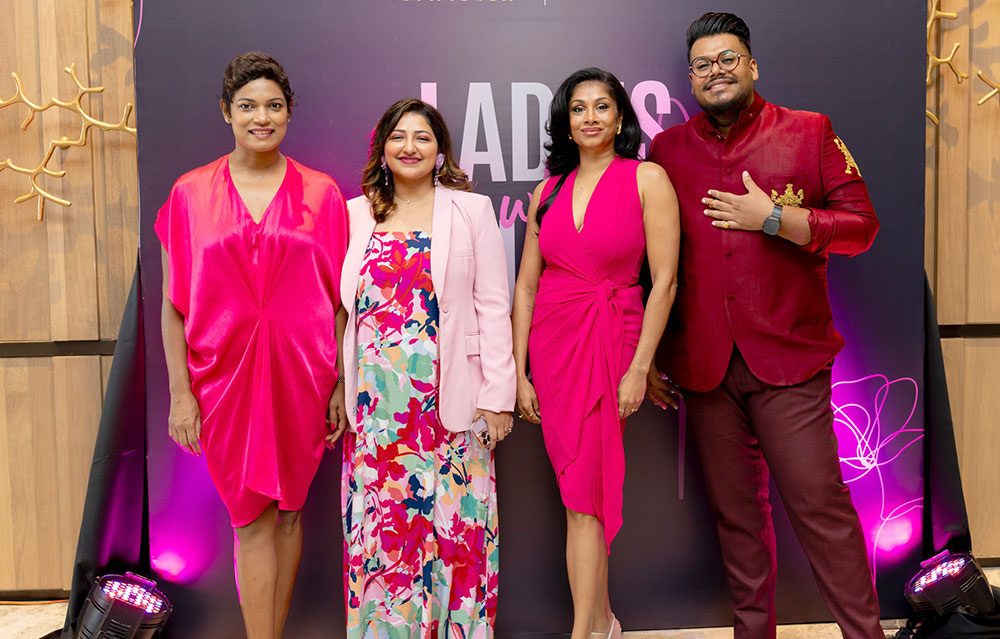
Women’s Day at Mariott Courtyard
:Dr Shanika,Tanuja and Charini share thier personal journeys
Every year on March 8th, the world comes together to celebrate International Women’s Day (IWD) a day dedicated to honoring the achievements of women, advocating for gender equality, and inspiring action towards a fairer and more inclusive world. This year, the theme for International Women’s Day 2025, “For ALL Women and Girls: Rights. Equality. Empowerment.”, highlights the critical need to create a society where every woman and girl has equal opportunities. rights. and the power to shape her own future.
The invaluable contributions of women are seen not only within the Sri Lankan community but also around the world. Women have continuously made remarkable progress in science, politics, business, education, arts, sports, and beyond. Their accomplishments and resilience have paved the way for a more equitable society. However, despite significant progress, many women still face social, economic, and cultural challenges such as gender discrimination, unequal pay, limited access to education, and workplace bias. International Women’s Day calls upon individuals, organizations, and communities to unite to break down barriers and foster an environment of inclusivity and opportunity for all women and girls.
By fostering an inclusive society where women and girls have the resources and support they need, all of us can collectively contribute to a better and more equitable future. As we celebrated International Women’s Day 2025, it is the responsibility of all women to reflect on the importance of gender equality and to support policies, programs, and initiatives that amplify women’s voices, rights, and opportunities.
Happy International Women’s Day 2025 from all of us at Sri Lanka Foundation International. Together, let’s build a future where every woman, regardless of her background, has the power to thrive.
This year Women’s Day was celebrated under the theme Equality. Empowerment. “This year’s theme calls for action that can unlock equal rights, power and opportunities for all and a feminist future where no one is left behind.
In keeping with this spirit of womanhood ,Women Day was celebrated by Courtyard by Mariott recently with three remarkable women.With hearts full and spirits lifted, Courtyard by Mariott Colombo in partnership with Christell luxury, wellness celebrated this great event admist a large gathering. It was a celebration of empowerment, wellness and connection held at the Emerald ballroom. This place was transformed into a haven of warmth and camaderie, insightful conversations and experiences of women were shared and this event was followed by a brunch.
It was a moment to pause, reflect and celebrate for women, a panel discussion by three remarkable women Dr. Shanika Arseculratne, Tanuja Perera Raymond and Charini Suriyage, Moderated by Danu Innasithamby, these three women shared their personal journeys and professional expertise offering invaluable perspectives on holistic wellness sustainable fitness and the art of cultivating confidence and professional presence. What resonated most from ‘Ladies who Brunch’ was the sheer resilience and practical wisdom of women .They addressed the complexities of modern womanhood, body changes mental health and work life balance. This event resonated a powerful reminder that empowerment is built on both inner strength and practical looks for navigating life’s challenge” This was shared by Elton Hurtis, General Manager Courtyard by Mariott Colombo.
The tropics discussed and curated by Dhanu were topics of interest for women ,like embracing change with grace, discussing body changes and self acceptance, emphasising self compassion and personal wellness journeys,nurturing inner strength, highlighting the importance of mental health and wellbeing and sharing practical tips for mindfulness and encouraging a open dialogue. The other topics were the
power of sisterhood, celebrating the strength of women supporting women, fostering a culture of empathy and encouragement.
Finding balance in a busy world: Addressing stress management, multinational well being and strategies for healthy living. The other topics were
Leadership and partnership: Discussing work life balance, the role of supportive partners; and the importance of raising emphatic sources.
Choosing your path. Emphasizing the significance of wwas was selecting supaportive partnership that honouring career aspiration.
“As a woman, embracing body positivity is not just about how we look but about we fell in our own skin. True wellness means prioritising our health mind, body and spirit because when we take care of ourselves, we’re better able to care for those we love empowering ourselves with self love and wellness is the greatest gift we can offer to both ourselves and the ones.” echoed Dr. Shanika Arseculartne.
This event served as a powerful reminder that empowerment is a journey of shared experiences practical wisdom and unwavering support. This gathering was more than a brunch; it was a moment of connection that undoubtedly left a lasting legacy on the minds of women.
By Zanita Careem
-

 News7 days ago
News7 days agoSeniors welcome three percent increase in deposit rates
-

 Features7 days ago
Features7 days agoThe US, Israel, Palestine, and Mahmoud Khalil
-

 News7 days ago
News7 days agoScholarships for children of estate workers now open
-
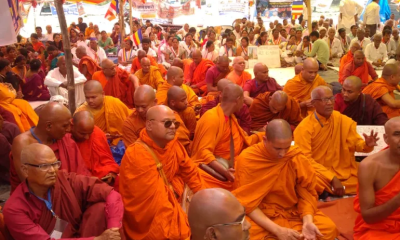
 Foreign News5 days ago
Foreign News5 days agoBuddhism’s holiest site erupts in protests over Hindu ‘control’ of shrine
-
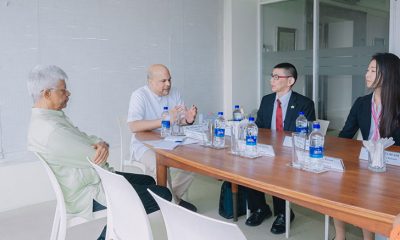
 News7 days ago
News7 days agoJapanese Defence Delegation visits Pathfinder
-

 Features4 days ago
Features4 days agoCelebrating 25 Years of Excellence: The Silver Jubilee of SLIIT – PART I
-

 Editorial6 days ago
Editorial6 days agoWhen tractors become cars!
-

 Business2 days ago
Business2 days agoAIA Higher Education Scholarships Programme celebrating 30-year journey


